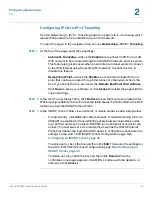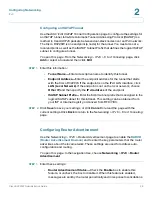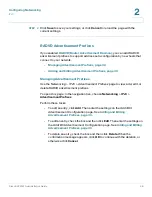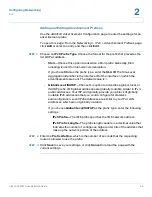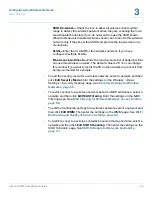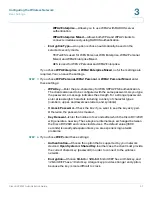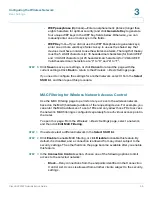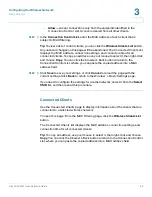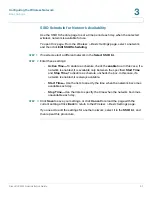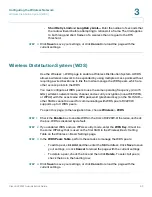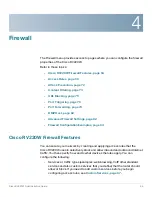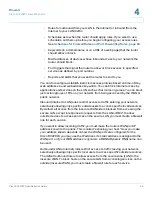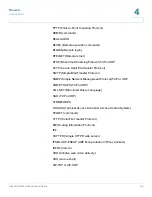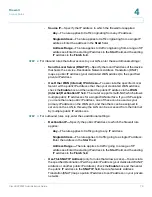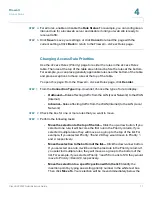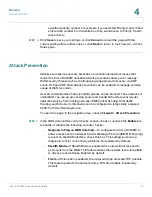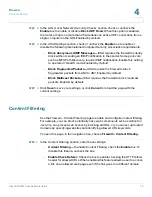
Configuring the Wireless Network
Basic Settings
Cisco RV220W Administration Guide
58
3
•
WEP passphrase
(Optional)
—
Enter an alphanumeric phrase (longer than
eight characters for optimal security) and click
Generate Key
to generate
four unique WEP keys in the WEP Key fields below. Otherwise, you can
manually enter one or more keys in the fields.
•
WEP Key 1-4—
If you did not use the WEP Passphrase to generate keys,
enter one or more valid keys. Select a key to use as the shared key that
devices must have in order to use the wireless network. The length of the key
must be 5 ASCII characters (or 10 hexadecimal characters) for 64-bit WEP
and 13 ASCII characters (or 26 hexadecimal characters) for 128-bit WEP.
Valid hexadecimal characters are “0” to “9” and “A” to “F”.
STEP 5
Click
Save
to save your settings, or click
Cancel
to reload the page with the
current settings. Click
Back
to return to the
Wireless > Basic Settings
page.
If you need to configure the settings for another network, select it from the
Select
SSID
list, and then repeat this procedure.
MAC Filtering for Wireless Network Access Control
Use the
MAC Filtering
page to permit or deny access to the wireless network
based on the MAC (hardware) address of the requesting device. For example, you
can enter the MAC addresses of a set of PCs and only allow those PCs to access
the network. MAC filtering is configured separately for each virtual access point in
the router.
To open this page:
From the
Wireless > Basic Settings
page, select a network,
and then click
Edit MAC Filtering
.
STEP 1
If needed, select a different network in the
Select SSID
list.
STEP 2
Click
Enable
to enable MAC filtering, or click
Disable
to disable this feature. By
default, it is disabled, and a connection is allowed from any client, subject to the
security settings. The other fields on the page become available after you enable
this feature.
STEP 3
In the
Connection Control
section, choose one of the following options to limit
access to the selected network:
•
Block
—Deny connections from the endpoints identified in the
Connection
Control List
. Access is allowed from all other clients, subject to the security
settings.


